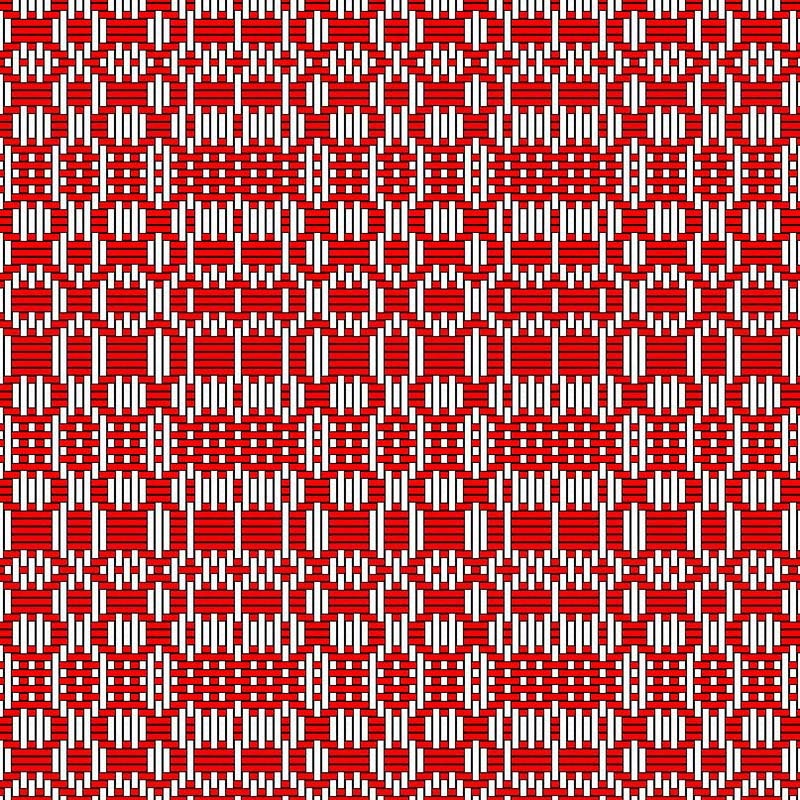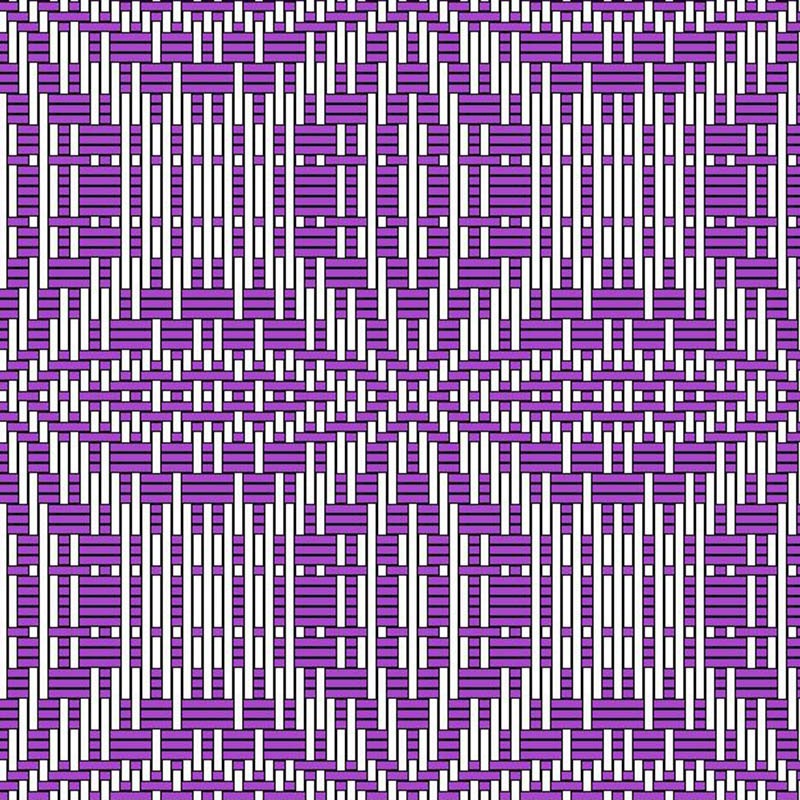Rather than weaving on Saturday, it ended up being puzzle day. My son and I both love doing puzzles, and we spent most of the day putting 1,000 little cardboard pieces together. It was strangely satisfying. Other than that, I wove a bit on my inkle dog leash, made some face masks, and started browsing books of overshot patterns.
Sunday was choosing drafts day. As I wrote last week, my goal is to combine two overshot drafts with a lace draft to create a blended draft that will let me weave combinations of the three patterns for 13 towels. After a little email exchange with Madelyn van der Hoogt, I decided to take her advice and use huck lace for my lace. Huck lace has an odd/even alternation so it matches more easily with overshot, which has the same alternation. I have The Best of Weaver’s Huck Lace that includes a great 4-shaft huck lace sampler that I wove many years ago. In what could be considered serendipity, I wove the sampler using 10/2 cotton, my yarn of choice for this project. When I get to that point, I can use my sampler to determine which treadlings I like best. 
“Sweet and Lovely” by Bertha Gray Hayes has the small designs I was looking for in an overshot draft.
One full repeat of the huck lace pattern uses ten ends, which meant finding overshot patterns that were multiples of ten. I went through my library and pulled out A Handweaver’s Pattern Book by Marguerite Porter Davison, Mary Meigs Atwater’s Recipe Book, and Weaving Designs by Bertha Gray Hayes. For variety, I wanted one design that was fiddley and one that was big and flowy. After a few hits and misses playing with weaving software, I decided that “Sweet and Lovely,” design #68 by Bertha Gray Hayes fit the bill for fiddley. On a whim, I input “Orange Peel” from the Recipe Book into Fiberworks and loved its large circles and shapes. Although the original draft has only 38 ends, it easily expanded to 40.

“Orange Peel” by Mary Meigs Atwater has the large shapes I wanted to offset the smaller ones in “Sweet and Lovely” above.
With my three drafts in hand, I was ready to start blending. If you are interested in the original 4-shaft drafts, I have put them in the WIF library, as “Sweet Orange Huck.” I haven’t expanded them to full towel width, and you might notice that “Sweet and Lovely” was adjusted to balance it differently than in the original draft. I also didn’t fully expand the treadling for any of the drafts. My first goal was to simply find drafts that would work well together.
Next up, blending, balancing, and a little sampling.
Weave well,
Susan

